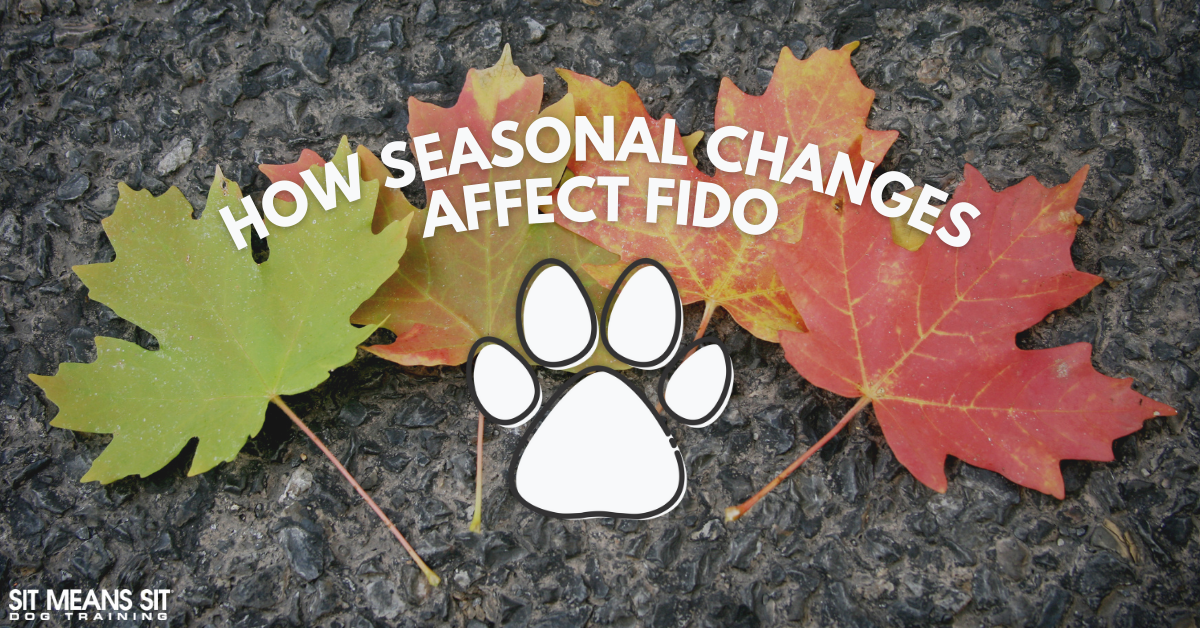
How Seasonal Changes Can Affect Your Canine
With fall in full swing, you may notice differences in your dog’s temperament or behavior that weren’t present in the summer. It’s essential to understand how our pups respond to changes in their environment the same way we do. Today, we’ll discuss how seasonal changes affect your canine and how to help them get more comfortable as the year progresses.
Ways Seasonal Changes That Can Impact Your Canine
Most dogs can experience Seasonal Affective Disorder (SAD) like humans. This happens when your pup becomes depressed during the cold months when animals and humans experience smaller amounts of sunlight. Luckily, SAD is easy to combat. Spending time in the sun can significantly decrease the effects of depression on your dog’s body and mental health.
You may also notice an increase in sluggish behavior during cold or hot months. Their natural rhythms may be thrown off during seasonal extremes. Keeping a schedule for your dog is helpful so they are not as strongly affected by a season change.
Your canine’s coat is another aspect of your furry friend that can be affected by a seasonal change. Most dogs will experience two major sheds throughout the year during, you guessed it – major seasonal changes.
During this time, they change from summer to winter coats and vice versa. Keep a close eye on dry skin and irritated patches caused by dry air or over-sun exposure.
Another significant change you may notice in your pooch is in their appetite. Their level of hunger may increase rapidly as the temperature drops. This extra food intake helps your dog store energy to keep warm during winter. Keeping your dog from overeating is essential to avoid bloating and other health issues.
Dog Breeds and Their Preferred Seasons
Different dog breeds have originated from all around the world. This causes each breed to handle intense weather changes differently.
Furballs with longer snouts, larger ears, a smaller stature, and short, single, or hairless coats will handle heat best. These breeds will have the least trouble adjusting to seasonal changes in warmer climates.
- Boxer
- Basenji
- Yorkshire Terrier
- Pharaoh Hound
- Dalmatian
Dogs with thick double coats, large bodies, large paws, and dense fur on their ears are best suited for the cold. These breeds will have an easier time adjusting to seasonal changes in cold climates.
- Siberian Husky
- Bernese Mountain Dog
- Saint Bernard
- German Shepard
- Chow Chow
How to Help Your Pup Adjust to Seasonal Changes
Unfortunately, there are no easy ways to stop these seasonal changes from occurring; year after year, they only seem to intensify. Even though we can’t control the weather, we can help our furbabies adjust to the yearly changes. Depending on the weather, there are many steps you can take to help your pup cope as we move throughout the year.
Stay out of extreme temperatures, no matter the season. Too hot or too cold can both have negative impacts on your pup. Keep your furry friend indoors if the weather has become dangerous, like extreme temperature changes, storms, or potential snow.
In the winter, you should use a heated bed to keep your dog’s joints from injury and a cooling pad to keep them from overheating in the summer. Summer is also a fun time to enjoy water activities.
Get Fido plenty of exercise. Activity will not just keep your dog physically fit, but it will improve their mental health, too!
Lastly, it’s crucial to make sure that your dog’s coat is fitting for the season. Groom your pup frequently so your pooch is comfortable, no matter the weather.
Now, you’re ready for any and all weather changes throughout the year. Keep a close eye on Fido and enjoy watching Earth’s natural changes with your puppy by your side.
